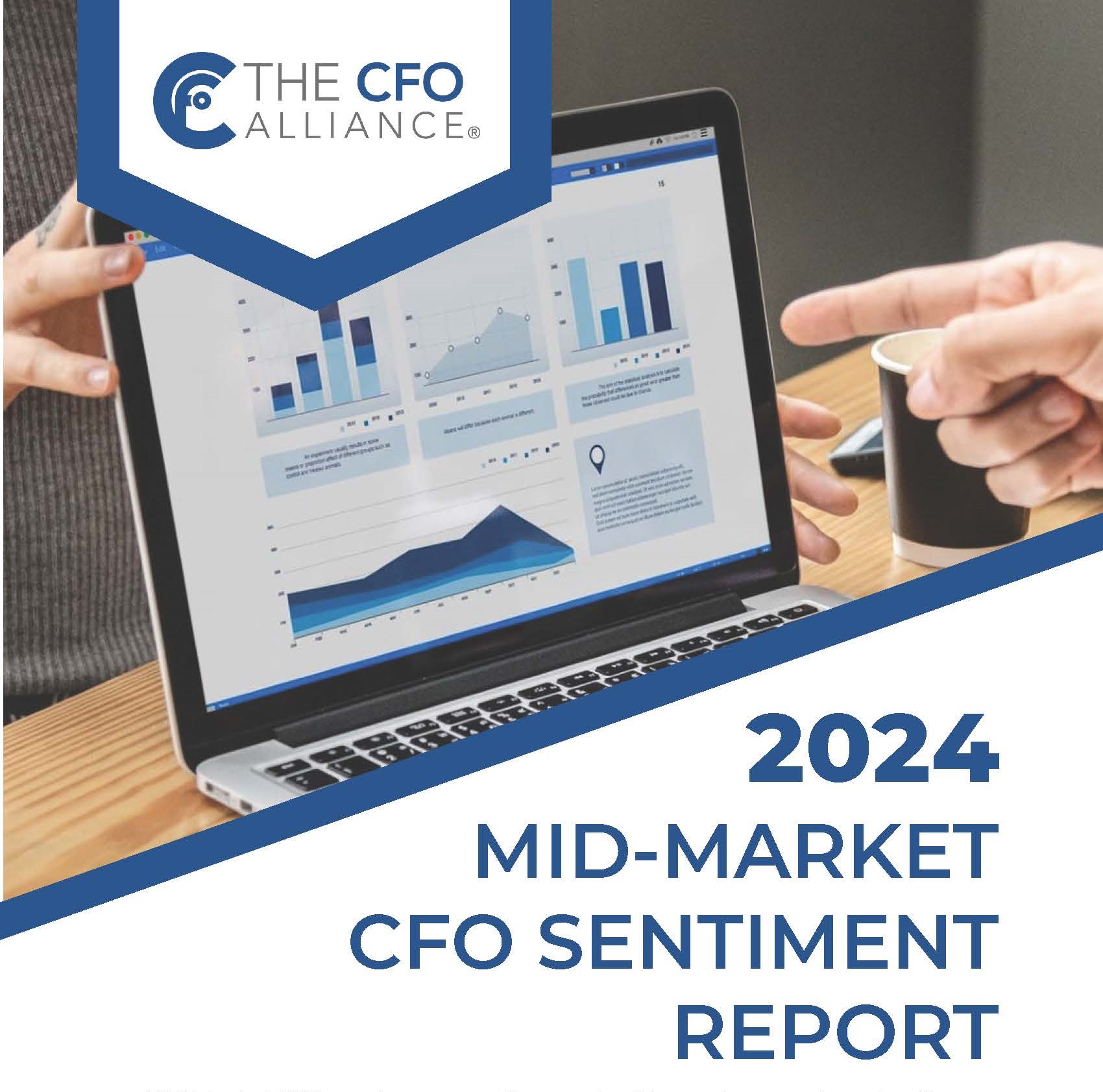CFO Value Creation in 2023: Forecasting Accuracy with a Basic Understanding of Selling & Sales Management
How CFOs Can Improve Top-line Forecasting Accuracy with a Basic Understanding of Selling & Sales Management
Who is responsible for forecast accuracy? Regardless of the story that the cross-function forecast inputs tell, good or bad, CFOs “own it”. They’re the truth hunters situated at the top of the value chain. Marketing and the Sales function in particular share this responsibility, and they hopefully operate as the “first fine filter” of forecast roll-ups that enable a high degree of accuracy.
This final installment of the 3-part Series on “better basics” of revenue and margin forecasting accuracy deals with Selling and Sales Management. They are inter-dependent components of the FP&A planning process and the revenue generation ecosystem comprising Market Understanding, Market Strategy, Branding, and Marketing Communications presented previously in Parts 1 and 2.
Considerations for Assessing the Validity of a Sales Forecast
Given the multiple industries and innumerable categories of products or services being marketed and sold it would be impossible to cover all the considerations or with the highest level of specificity. However, there are core factors cast in the form of meaningful questions which cut across a wide swath of products and services useful for assessing the quality of sales forecasts. For the purpose of presenting each article in this this series, good “market fit” of products or services has been assumed. Without good “market fit”, there’s much more to worry about than forecast accuracy!
Utilizing the Power of Revealing Questions
Multiple sales-centric questions will assist assessments of forecast validity. A fundamental place to start is with a clearinghouse question revealing an inherent degree of difficulty in both selling and forecasting.
Do your products or services need to be sold (i.e., they generally require an intervention, often human, to assist product evaluation and purchase) or are they typically bought (i.e., marketing communications-centric influence with minimal to no sales resources are generally required)?
If they must be sold . . . basic things to factually know and questions to be answered with factual evidence backing them up will help discern the level of predictability in a sales forecast.
Things to Know Up Front | For Each Account Called Out in the Sales Forecast . . . | Why? . . . All of Which Have a Bearing on Forecast Confidence Level |
Length of the average sales cycle | Examine the sales cycle to determine how purchase interest materialized and advanced to the point where revenue is now being forecasted. | Wishful thinking often accompanies a forecasted sale. Except in special cases where a brand or product/service is so powerful that the purchase process emerges from self-initiated and/or urgent demand, it takes work and appropriate time for a sales suspect to evolve into a bone-a-fide, closeable prospect. |
Level of account contact | Review the title and role of the decision maker(s) and any internal or external influencers who are involved (e.g., committees, consultants, industry peers, etc.). | The appropriate decision authority who can say “yes” and any recommenders/influencers who can say “no” must be known and involved in product/service evaluations in order to confidently predict a sale. |
Whether a pre-existing and/or loyal relationship exists | Check customer satisfaction scores and determine if there is a history of positive feedback and repeat buying | The answer will indicate the degree of difficulty and/or trust involved in forecasting a purchase. |
Degree of advancement and completeness of the selling process | Review how the selling process resulted in forecasting a closeable prospect beginning with initial contact. Ask what steps in the sale cycle have been completed (e.g., needs/opportunity discovery, situation problem-solving, solution budget affirmation, identification of the decision-making process, demonstration or other proof point of value delivered, formal proposal issued, objections raised and addressed, competitive scenario, etc.). | There are likely many solution providers and even more solutions available to solve problems and capture opportunities. And buyers typically want to do the due diligence that their organizations and their personal responsibilities require. So, the path to purchase is not linear and it involves discreet steps that buyer and seller typically progress through. The better selling organizations will operate with an established sale process model and know what steps have been completed as an indicator of forecast worthiness. |
Proficiency of indirect sales channels, where applicable | Determine product inventories and the sell-through rates for each indirect channel. | If stuffing the channel has occurred previously, the “trend line” it established could be a false indicator of future sales. Outside of hard predicable orders to be taken, it's important to know the true sales capability of an indirect sales channel and the rate of sell-through before predicting more. |
The market coverage model | Ideally, determine the number and/or type of market decisions the coverage model addresses. | The breadth of market coverage defines the degree to which opportunities are uncovered/uncaptured (signaling sales upside) or saturated (competitors abound). Both can factor in evaluating forecast risk and opportunity. |
Sales proficiency | Evaluate whether sellers are proven to have the level of industry and technical knowledge and sales and account management skills required build trusted relationships yielding close rates of 75-80% or better consistently. Factor in historical formal sales won/lost analytics. | The level of soft skills and effectiveness of performance-based sales training (i.e., training that tests whether learning objectives have been achieved) have a direct bearing on the length of the sales cycle and forecastable close rates. The extent to which lessons learned from won/lost assessments are tested for implementation will also affect the probability of sales successes. |
If the products or services are typically bought (i.e., largely commodities and transactional sales often centric to on-line and retail storefront demand generation models), the strength of the Marketing engine factors heavily in attracting prospects and converting interest into sales. Including the factors noted above for the must-be-sold category, among the most vital to consider are:
Things to Know Up Front | Look Deeper for . . . | Why? . . . All of Which Have a Bearing on Forecast Confidence Level |
The quality of data-driven targeting. | Buyer profiles that include personalization and personification attributes. | Data has a direct correlation to the level of qualified prospect generation. And because data can only point and can’t touch, person-specific data makes connections that resonate, attract, and convert more effectively. |
The level of awareness and favorability of the business/brand and reputation of its products/services. | Data that reveals facts on awareness, positive predisposition, customer satisfaction, and third party/user reviews and recommendations. Evaluate whether branding is done right with a marketing strategy built with a balanced push-pull model. | Markets are conversations. The old marketing playbooks of promote, rinse, and repeat do not work today. The one-way nature of marketing communications and digital hyper-push carpet bombing of product promotions has eroded trust in brands to the point that many buyers trust peer buyers and communities more than brands. |
Brand and product/service value narratives. | How the brand story and value propositions are expressed – look for compelling creative differentiation in both logical and emotional buying rationale presented. | Marketing messaging must break through the clutter with creative differentiation. Without clear differentiation, a perception of sameness will cause the buyer to consider price as the major distinguishing criterion for purchase. |
Media strategy | Determine the level of alignment between the media strategy with the media consumption habits of targeted buyers.
| Being present with demand generation campaigns where your targeted buyers get informed and buy and with enough media weight is key to reaching the volume of qualified forecastable prospects that you can convert into revenue. |
Pricing strategy | Comparable products/services and the strength of their marketing footprint. This is a cursory test of whether there is a de facto industry price level that requires alignment or whether there is pricing upside for differentiated products/services. | The degree of competitive clutter may determine importance of price competitiveness or value pricing opportunity. An assessment of your price/value ratio will determine risk or opportunity in forecasts. |
Purchase process | Formal evaluation of your buying experience for satisfaction levels, cross-platform seamlessness, and “easy everything”. | How buyers make informed and confident purchase decisions has a direct bearing on their recurring purchases and recommendations to others. And selling where and how customers buy product or service categories like yours supports both growth and forecasting with greater confidence. |
It should be noted that some go-to-market models utilize multiple channels and both buyer-assisted and unassisted selling strategies. In such cases both sets of questions (the must be sold- or bought-related) apply in evaluating a forecast for accuracy.
On the Question of Pricing in the Margin Management Process
There is some truth in the longstanding belief that markets ultimately determine price for goods and services sold. Of course, it’s always beneficial to achieve a high degree of differentiation and unique points of value as product/service design principle that enables value pricing. But wherever price has been established as a crucial purchase criteria, it’s near impossible to lower its importance in buyers’ minds. However, there is opportunity to elevate the level of importance of other buying criteria. Outside of pure commodity sales generally, attributes like satisfaction guarantees, loyalty reward programs, levels of personalized service and support, emotional associations with a brand, for example, can “compete” effectively with pricing as a decision criteria and cause buyers to reason a richer value equation than just price.
Then there are those cases where price is given as the reason for not buying. What’s heard when trying to close a sale . . .
“You’re too expensive”
Before you know it, you’ll be feeling the pressure from Sales to reduce prices and squeeze margins. However, ground-breaking research into executive buyer and seller behavior has shown that price is also used as the most convenient and almost unassailable excuse given for not buying. And, it’s often not the real reason that buyers don’t buy.
In fact, in one landmark study of 50 failed sales processes involving highly qualified prospects and where the seller was formally observed by researchers completing all the proven pre-sale requirements of selling strategy and proper techniques, 38 of the 50 buyers later admitted to researchers that price was not the true reason for not buying. The real reason related to fear of making the decision in favor of the product or brand and explaining their decision to key people in the organization. This is called the “resolving consequences” aspect of the decision-making process. Because buyers are putting their reputations on the line for big ticket items and in some cases their jobs are on the line, they need to feel safety in their decision. They need to buy without worry.
So, toward the end of the sales cycle, sellers must abandon repetitious reviews of product features, advantages, and benefits. What’s important at the final stages of the sale cycle are behaviors that give buyers assurances that their decision is right. For example, this is the time to focus more on things like the process for managing an installation, or assuring the completion of a project, or how you will communicate during the various stages of an implementation, or explaining the metrics you will use to measure success, etc. For the sale of complex products or services, massive research into 35,000 professional sales calls says this is how to improve close rates and avoid the price reduction death spiral that begins with an over-reaction to the words “too expensive.”
Assessing the Quality of Seller Talent
Regardless of role or title, there are many who participate in selling. Without holding the title of “sales representative” or “account executive”, many roles participate in selling. It could be an SME such as an engineer, an architect, a lawyer, a customer support rep, or an accountant – virtually any role involved in discovering customer needs and solving problems with solutions in a process that ultimately influences a purchase.
The level of talent involved in selling has a direct bearing on forecasting accuracy as much as it does revenue generation. The level of complexity inherent in a product or service and the path to purchase could dictate the need for elite sales skills to develop and close business. Just like for other roles, sales skills will generally improve over time with a reasonable effort, performance evaluations, and good coaching. But businesses can only afford so much on-the-job learning and nurturing. When forecasts are missed rather habitually, it’s time to look deeper in the quality of selling resources.
Some sellers function more as order takers and there is a place for them in many business models. They often serve established accounts, protect relationships, and simply replenish as needed. While it’s better to manage sales resources that are blessed with selling skills regardless of product/service complexity, some types of sellers have to do much more than take orders. Many never take an order; they have to develop a sale end-to-end. They need to know how to conquest. They need to persevere. They need to be creative in identifying decision makers, breaking through screens to secure appointments, discovering and developing needs, demonstrating how problems are solved by their offerings, rationalizing pricing proposals, handling objections, building trusted and attentive relationships, and defending against competition continuously. This latter, more skilled profile of seller of complex solutions is the focus for this hypothetical situation illustrating how to go about assessing their abilities and skills and managing.
Let’s say a company has a team of 15 sellers.
- Five reps are top performers; they always achieve or over-achieve their plans and they have the best track record on forecasting sales accurately.
- Five are moderately successful with some hitting plan periodically and most not missing their forecast by 25% or more.
- Five are generally under-performing their sales targets and forecast miss by 50% or more habitually.
The question is how should a Sales Manager or other stakeholders go about assessing, coaching, and counseling sales resources, and what should be done once the level of skills and capabilities are known? Here’s a practical view:
- Generally, stay out of the way of the top five performers except to identify their best practices and share them with the others. Certainly, support the top five when they request help because there may be further sales upside.
- Invest the most time and money on the moderate performers. They have shown some promise sufficient to believe that more training, coaching and counseling could bring them closer to the level of proficiency exhibited the top five performers.
- Put the bottom five performers on an activity track. Track the number of sales calls, demos, proposals, etc. that they make. If these activities prove to be low and losses are high, they will likely not make the trip regardless of training investments. However, if these basic activities are proven to be extensive but without an uptick in sales, they are likely to have skills issues that can be addressed with more investment in training. Investing further requires judgement, but next steps usually will self-identify with tight inspection on those given another chance.
Summing Up: In Search of Bankable Forecasts
Fact-based insights are needed for all the considerations above on the hunt for truth. While everyone would prefer to roll-up numbers that indicate good news, all credibility will be lost with repeat forecast misses. So, the better Sales Managers and Marketers will consider skepticism as a virtue and partner with CFOs in scrutinizing and cleansing initial forecast roll-ups. If that doesn’t happen by design, CFOs can constructively intervene with the considerations noted above and lead the functions in pressure testing and reasoning forecast inputs with better rigor and discernment.
Solid core knowledge of the Strategy, Marketing, and Sales ecosystem coupled with the CFO’s power of questions will always beat out anecdotal information, “gut feel”, and “group think” to produce more assured forecasts. Hopefully, CFOs can utilize these basic principles and perspectives to lead the cross-functional forecasting process by example of better forecasting rigor.
Engage and Grow with Us
Now in our 10th year, The CFO Alliance has been championing CFOs as leaders of change and growth.
Discover more about this dynamic 9,000-Member peer group and our collaborative learning and information sharing platform.
Become a Member and make connections that count, or upgrade your current membership here.



